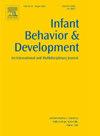婴儿伸手和抓握:测试发育级联的框架
IF 2
3区 心理学
Q3 PSYCHOLOGY, DEVELOPMENTAL
引用次数: 0
摘要
本综述的目的是突出2000年至2025年间发表的关于婴儿伸手和抓握的研究发现。我们以过去四分之一世纪的两个例子为例进行综述,研究人员从发育级联的角度引入了新的方法来研究婴儿伸手和抓握的发育变化-一个领域的变化影响该领域内外的能力的过程。在第一个例子中,我们观察了“微观”层面,通过实验范式粘性连指手套来剖析发育变化的组成部分。在第二个例子中,我们缩小到“宏观”水平,以确定从婴儿惯用手到发育时间的不同变化轨迹。在这两项研究中,我们都观察到早期的经历如何导致婴儿后期的不同技能。这些方法说明了发育科学家如何开始在不同的分析水平上测试发育级联,这些例子对所有婴儿研究人员必须做出的方法和概念决策具有更广泛的影响。在接下来的25年里,我们概述了研究方向,旨在进一步测试婴儿的伸手和抓握经验如何影响下游发展结果。本文章由计算机程序翻译,如有差异,请以英文原文为准。
Infant reaching and grasping: Frameworks for testing developmental cascades
The goal of this review was to highlight discoveries on infant reaching and grasping from research published between 2000 and 2025. We structured the review on two examples from the last quarter century where researchers introduced new approaches for investigating developmental change in infants’ reaching and grasping from the perspective of developmental cascades—processes by which changes in one domain influence abilities within or outside that domain. In the first example, we looked at the “micro” level of dissecting the components of developmental change as measured with the experimental paradigm sticky mittens. In the second example, we zoomed out to the “macro” level to identify different trajectories of change over developmental time from infant handedness. In both, we observed how earlier experiences can lead to different skills later in infancy. These approaches illustrate how developmental scientists can begin to test developmental cascades at different levels of analysis, and these examples have broader implications for methodological and conceptual decisions that all infancy researchers must make. For the next quarter century, we outlined research directions aimed at mechanistic questions to further test how infants’ reaching and grasping experience influences downstream developmental outcomes.
求助全文
通过发布文献求助,成功后即可免费获取论文全文。
去求助
来源期刊

Infant Behavior & Development
PSYCHOLOGY, DEVELOPMENTAL-
CiteScore
4.10
自引率
4.80%
发文量
94
期刊介绍:
Infant Behavior & Development publishes empirical (fundamental and clinical), theoretical, methodological and review papers. Brief reports dealing with behavioral development during infancy (up to 3 years) will also be considered. Papers of an inter- and multidisciplinary nature, for example neuroscience, non-linear dynamics and modelling approaches, are particularly encouraged. Areas covered by the journal include cognitive development, emotional development, perception, perception-action coupling, motor development and socialisation.
 求助内容:
求助内容: 应助结果提醒方式:
应助结果提醒方式:


